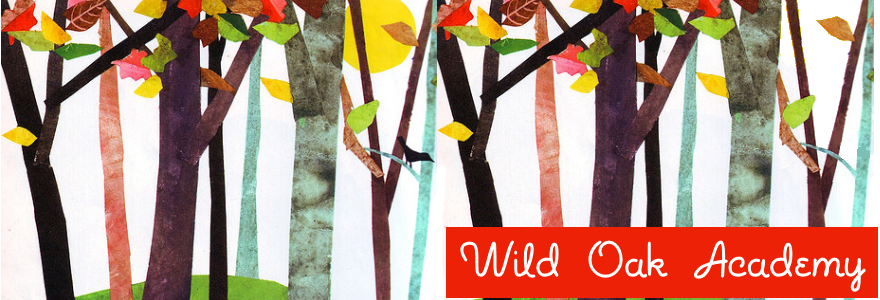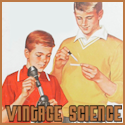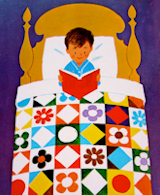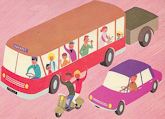Part One
*This page still needs a lot of fine-tuning!
Unit 4: A World of Art and Artists
- Additional Reading: The Visual Experience, Chapter 15: Interpretation: There Is More to It Than Meets the Eye, pp. 200-205
- Lesson 1: Mysteries of Long Ago
- Studio 1: Create a Cave Painting (Variation: Making Elemental Drawing Materials)
- Additional Reading: The Visual Experience, Chapter 18: Islands of Time I, pp. 244-246
- Lesson 2: Art of Ancient Egypt
- Studio 2: Design a Symbolic Throne
- Studio: Draw Like an Egyptian
- Additional Reading: The Visual Experience, Chapter 18: Islands of Time I (Egypt), pp. 246-249
- Lesson 3: Art of Ancient Greece
- Studio 3: Make an Olympic Poster
- Studio: Three Columns
- Additional Reading: The Visual Experience, Chapter 18: Islands of Time I (Greece), pp. 250-253
- Lesson 4: Art of Ancient Rome
- Studio 4: Design a Model with Arches
- Additional Reading: The Visual Experience, Chapter 18: Islands of Time I (Rome), pp. 254-258
- Lesson 5: Art in the Middle Ages
- Studio 5: Make an Illuminated Storybook
- Additional Reading: The Visual Experience, Chapter 18: Islands of Time I (The Middle Ages), pp. 259-265
- Meet the Artist: Diego Rivera
- Look and Compare: Faces of Motherhood
- Lesson 6: Architecture in the Americas
- Studio 6: Design a Mayan-Style Movie Theatre
- Lesson 7: The Art of Renaissance Europe
- Studio 7: Create a Renaissance-Style Portrait
- Additional Reading: The Visual Experience, Chapter 18: Islands of Time I (The Renaissance), pp. 266-273
- Lesson 8: Early Eastern Art
- Studio 8: Make a Banner
- Studio: Tie-Dye Shibori Vessel
- Additional Reading: The Visual Experience, Chapter 16: Non-Western Art, pp. 206-223
- India, pp. 206-211
- Southeast Asia, pp. 212-218
- Studio 16.1: A Watercolor Wash Landscape
- Studio: Cat Painting (China/Shen Quan), Usborne Art Treasury, pp. 56-59
- Japan, pp. 219-223
- Sea Print (Hokusai), Usborne Art Treasury, pp. 12-15
- Additional Reading: The Visual Experience, Chapter 16: Non-Western Art II, pp. 224-243
- Islam, pp. 224-228
- Studio: Sparkly Tiles, Usborne Art Treasury, pp. 84-87
- Africa, pp. 230-233
- African Masks, Usborne Art Treasury, pp. 24-27
- Pre-Columbian, pp. 234-237
- North America, pp. 238-243
- Studio: Aztec Warriors
- Additional Reading: The Visual Experience, Chapter 19: Islands of Time II, pp. 274-305
- The 1600s and the Baroque Style, pp. 275-279
- The Enlightenment, Rococo, and Neoclassicism, pp. 279-281
- Romanticism, Realism, Impressionism, and Post Impressionism, pp. 283-288
- The Industrial Revolution; Architecture: Frame Construction, pp. 288-289
- Art of the First Half of the Twentieth Century (Fauvism, Expressionism, Cubism, Dadaism), pp. 290-297 (See projects below)
- Architecture of the First Half of the Twentieth Century, pp. 298-299
- Art of the Second Half of the Twentieth Century, pp. 300-302
- Studio: Splatter Painting (Pollack), Usborne Art Treasury, pp. 80-83
- Architecture of the Second Half of the Twentieth Century, p. 303
- Postscript: The Post-Modern Era, pp. 304-305
- Lesson 9: Modern Western Art
- Studio 9: Create an Abstract Collage
- Studio: Reptile Relief (Kandinsky), Dynamic Art Projects, pp. 29-30
- Lesson 10: Modern Global Art
- Studio 10: Create a Ceremonial Sculpture
- Exit Through the Gift Shop: Banksy/Street Art
- Portfolio Project:
Create a Clay VehicleCreate a Free Form Vessel
- Lesson 1: People as Subjects
- Studio 1: Create a Wire Sculpture
- Lesson 2: Proportion and Faces
- Studio 2: Draw a Self-Portrait
- Studio: Modigliani Inspired Self-Portraits (Stretched Proportions)
- Lesson 3: Animals as Subjects
- Studio 3: Make an Animal Vessel
- Lesson 4: Still Life as Subject
- Studio 4: Create a Cubist Still Life
- Studio: Still-Life Closeups (Cezanne), Drawing and Painting, pp. 20-21
- Studio: Artist's Studio (Vuillard), Discovering Great Artists, p. 55
- Lesson 5: Landscape as Subject
- Studio 5: Draw a Pointillist Seascape
- Meet the Artist:
Miriam SchapiroPablo Picasso - Studio: Picasso-Inspired Soft Sculpture
- Studio: Picasso Masks
- Studio: Fractured Friend (Picasso), Discovering Great Artists, p. 70
- Studio: Clown Collage (Picasso), Usborne Art Treasury, pp. 20-25
- Look and Compare: Outdoor Sculpture
- Lesson 6: Impressionism
- Studio 6: Draw Like an Impressionist
- Studio: Mini "Monets"
- DVD: The Impressionists
- Lesson 7: Expressionism
- An Introduction to Fauvism: Matisse and Derain (video + art projects)
- Studio 7: Paint in Fauve Colors
- Studio: Paintings Like Stained Glass (Rouault), Drawing and Painting, pp. 46-47
- Lesson 8: Surrealism
- Studio 8: Create a Surrealist Painting
- Lesson 9: Pop Art
- Studio 9: Make a Pop Art Sculpture
- Studio: Comic Dots (Lichenstein), Discovering Great Artists, p. 102
- Abstract Expressionism Unit: Action Painting and Color Field (Jackson Pollock, Willem de Kooning, Mark Rothko and Helen Frankenthaler)
- Portfolio Project: Paint in Your Individual Style
- Lesson 1: Murals Tell Stories
- Studio 1: Create a Mural for Your School
- Lesson 2: Mosaic Expression
- Studio 2: Design a Mosaic Mural
- Lesson 3: The Art of Assemblage
- Studio 3: Create a Combine Painting
- Studio: Assemblage Art
- Lesson 4: Expressive Points of View
- Studio 4: Create an Abstract Cityscape
- Meet the Artist: Georgia O'Keefe
- Studio: Close-Up Flower Painting (O'Keefe), Discovering Great Artists, p. 86
- Studio: Petal Collage (O'Keefe), Usborne Art Treasury, pp. 76-79
- Look and Compare: A Change of Styles
- Lesson 5: Expression Through Symbols
- Studio 5: Create a Totem
- Lesson 6: Maks for Expression
- Studio 6: Create a Papier-Mache Animal Mask (Variation: Mexican "Tona" Animal Masks)
- Lesson 7: Expression Through Humor
- Studio 7: Create a Caricature
- Lesson 8: The Art of Industrial Design
- Studio 8: Create a Model for a Prototype
- Lesson 9: Graphic Design as Expression
- Studio 9: Create a Poster Portfolio
- Studio: Even Poster (Toulouse-Lautrec), Discovering Great Artists, p. 52
- Project: Create a Found-Object Sculpture
- Additional Reading: The Visual Experience, Chapter 20: Criticism and Critics, pp. 308-311
- Additional Reading: The Visual Experience, Chapter 21: A Critical Method, pp. 312-323
Labels: Art
This is a very rough draft of my plans for art next year, but I thought I'd go ahead and post them just in case someone finds them useful. First, I decided to go with a proper textbook for art, to help keep myself focused more than anything. After much deliberation, I chose Scott Foresman Art 6 as our spine (preview here) because it seemed to be the most appealing option, though it's ridiculously hard to find information about any of the art textbooks online.After receiving the books, I also decided to order an inexpensive older (2nd edition) copy of The Visual Experience because, while it's more dry and textbook-like, it includes a lot of information that the Foresman book does not and will be helpful as a supplement. I'm going to try to use these books over the course of two years, and thus have added in a lot of extra art projects (and likely, will be adding many more).
My goal is that we'll do art at least 2-3 days per week, saving Friday as an "open studio" day to experiment with new techniques and/or finish up other projects. I'm also thinking of implementing a 15-20 minute period for sketching every day. Other supplements that we'll be using are included on the blog sidebar - books on technique are here, along with my supply list.
Introduction
- The Visual Experience, Chapter 1: Seeing, Wondering, Enjoying, pp. 3-9
- The Visual Experience, Chapter 2: When Is It Art?, pp. 10-17
- The Visual Experience, Chapter 3: Describing What You See, pp. 20-25
- Lesson 1: Line
- Studio 1: Create a Contour Drawing (Variation: Blind Contour Drawing)
- Additional Reading: The Visual Experience, Chapter 4: Line, pp. 26-39
- Studio 4.1: Varieties of Line
- Studio 4.2: Expressive Line Drawings
- Studio 4.3: Contour Lines
- Studio 4.4: Hatch and Crosshatch (Variation: Sketching and Hatching, Drawing and Painting, pp. 22-23)
- Studio 4.5: Lines Express Feelings
- Studio: Straight Line Design (Mondrian), Discovering Great Artists, p. 61
- Studio: One Line Designs (Klee), Discovering Great Artists, p. 62 (Variation: One-Line Drawing, Drawing and Painting, pp. 30-31)
- Studio: Mixed Media Lines (Stella), Discovering Great Artists, p. 64
- Lesson 2: Shape
- Studio 2: Create with Shapes
- Studio: Seeing Shapes Still-Life (Cezanne), Discovering Great Artists, p. 48
- Studio: Painted Victorian Homes
- Additional Reading: The Visual Experience, Chapter 5: Shape, pp. 40-43
- Studio 5.1: Reversible Drawings
- Studio 5.2: Reversible Patterns
- Lesson 3: Form
- Studio 3: Create Clay Forms
- Additional Reading: The Visual Experience, Chapter 5: Form, pp. 44-55
- Studio 5.3: Foreshortening
- Studio 5.4: Distance
- Studio 5.5: Sculpting without Seeing
- Lesson 4: Space
- Studio 4: Change Space with Shapes
- Studio: Graphite Embossing
- Studio: Abstract Cityscape (Klee), Usborne Art Treasury, pp. 10-12
- Stusio: Painting Around the White (negative/positive space), Celebrate Your Creative Self, pp. 14-15
- Lesson 5: Space and Distance
- Studio 5: Draw with Perspective
- Studio: Simple Perspective with the Artist's Grid Canvas
- Additional Reading: The Visual Experience, Chapter 7: Space, pp. 74-91
- Studio 7.1: Depth in Collage
- Studio 7.2: Identifying One-Point Perspective
- Studio 7.3: Applying One-Point Perspective
- Studio 7.4: Identifying Two-Point Perspective
- Studio 7.5: Applying Two-Point Perspective
- Studio 7.6: A Landscape with Aerial Perspective
- Meet the Artist: Vincent van Gogh
- Van Gogh Resources
- Van Gogh: A Brush with Genius (Amazon Instant Video)
- Studio: Van Gogh Clay Plaque
- Studio: Painting Like Van Gogh, Drawing and Painting, pp. 48-49
- Look and Compare: An Artist's Style
- Lesson 6: Value
- Studio 6: Create a Value Drawing
- Additional Reading: The Visual Experience, Chapter 6: Value, pp. 57-61
- Studio 6.1: Value Contrasts
- Lesson 7: Color
- Color Wheel Lesson Plan
- Studio 7: Paint with Warm and Cool Colors (Alternative: Warm/Cool Weaving Paintings)
- Additional Reading: The Visual Experience, Chapter 6: Color, pp. 62-69
- Studio 6.2: Related Colors
- Studio 6.3: Monochromatic Colors
- Studio 6.4: Mixing Dull and Bright Colors
- Studio 6.5: Matching Colors
- Studio 6.6: Warm and Cool Colors
- Studio: Color Contrast Circles (Kandinsky), Usborne Art Treasury, pp. 52-55
- Studio: Mean Green (Interpreting the Emotion of Color)
- Mark Rothko (Color as an instrument for conveying emotions)
- Studio: One Color Painting (Picasso), Discovering Great Artists, p. 69 (Variation: Analogous Arrangements, Drawing and Painting, pp. 56-57)
- Studio: Magic Squares (Klee; mixing intermediate colors), Drawing and Painting, pp. 50-51
- Studio: Surprising Colors (Gauguin), Discovering Great Artists, p. 51
- Studio: Story Color Collage (Matisse), Discovering Great Artists, p. 58
- Lesson 8: Color and Colorists
- Studio 8: Paint in Complementary Colors
- Studio: Color Scramble
- Additional Reading: The Visual Experience, Chapter 6: Color, pp. 69-73
- (A fascinating look at the palettes of famous artists can be found here.)
- Lesson 9: Texture
- Studio 9: Create a Scene to Show Texture
- Studio: Texture Critters
- Studio: Watercolor Texture Casts
- Studio: Berthe Morisot: Texture Paints, Discovering Great Artists, p. 42 (We'll be doing a variation of this project, using Golden's Gel Mediums mixed with acrylics instead of tempera as suggested in the book)
- Studio: Painting on Textured Surfaces, Celebrate Your Creative Self, pp. 23-37
- Additional Reading: The Visual Experience, Chapter 8: Texture and Movement (Texture), pp. 92-97
- Studio 8.1: Simulated Textures
- Studio 8.2: Textures in Clay
- Additional Reading: The Visual Experience, Chapter 8: Texture and Movement (Movement), pp. 98-107
- Studio 8.3: Suggesting Movement in Clay
- Studio 8.4: Movement in a Comic Strip
- Studio 8.5: Make a Storyboard
- Studio: Resist in Motion (Degas), Discovering Great Artists, p. 40 (See also: The Dancers and Degas)
- Portfolio Project: Paint a Colorful Landscape
- Additional Reading: The Visual Experience, Chapter 9: Analyzing What You See, pp. 110-115
Trois Danseuses by Edgar Degas
Unit 2: The Principles of Design
- Additional Reading: The Visual Experience, Chapter 10: Design, pp. 116-122
- Quilted Work (Ringgold), Discovering Great Artists, p. 104
- Lesson 1: Balance
- Studio 1: Draw to Show Balance
- Additional Reading: The Visual Experience, Chapter 10: Balance, pp. 122-127
- Lesson 2: Emphasis
- Studio 2: Draw with Emphasis
- Lesson 3: Proportion
- Studio 3: Draw with Altered Proportions (Variation: All Out of Proportion, Drawing and Painting, pp. 26-27)
- Lesson 4: Pattern
- Studio 4: Show Pattern in Clothing
- Studio: Line, Pattern and Color Collage (Bearden), Drawing and Painting, pp. 28-29
- Studio: Patterned Interiors (Matisse), Drawing and Painting, pp. 54-55
- Studio: Crazy Quilt (Klimt), Dynamic Art Projects, pp. 98-99
- Meet the Artist: Henri Matisse
- Studio: Colorful Collage, Usborne Art Treasury, pp. 40-43
- Look and Compare: The Art of the Everyday
- Lesson 5: Rhythm
- Studio 5: Create Op Art
- Lesson 6: Unity
- Studio 6: Create a Unified Design
- Lesson 7: Variety
- Studio 7: Use Variety in a Drawing
- Portfolio Project: Paint a Still Life
- Additional Reading: The Visual Experience, Chapter 11: Introduction to Media, pp. 130-133
- Lesson1: Drawing, pp. 108-109
- Studio 1: Create a Gesture Drawing
- Additional Reading: The Visual Experience, Chapter 12: Two-Dimensional Media, pp. 134-136
- Studio 12.1: Contrasts in Chalk Drawing
- Lesson 2: Painting
- Studio 2: Paint a Landmark
- Additional Reading: The Visual Experience, Chapter 12: Two-Dimensional Media, pp. 137-142
- Studio 12.2: Watercolor Washes (Variation: Oil Pastel Resist, Drawing and Painting, pp. 40-41)
- Studio 12.3: A Tempera Painting
- Studio: Paul Klee Landscape (watercolor techniques), Dynamic Art Projects, pp. 18-19
- Lesson 3: Printmaking
- Studio 3: Create a Relief Print
- Studio: Flexi-Cut Collagraph
- Studio: Papier Collé Printmaking (Georges Braque)
- Studio: Tempera Monoprint (Mary Cassatt), Discovering Great Artists, p. 44
- Additional Reading: The Visual Experience, Chapter 12: Two-Dimensional Media, pp. 143-149
- Studio 12.4: A Linoleum Block Print
- Studio 12.5: A One-Color Screen Print
- Lesson 4: Collage
- Studio 4:
Make a Hobby Collage - Studio: Gelly Bowls (Dimensional Acrylic Collage)
- Additional Reading: The Visual Experience, Chapter 12: Two-Dimensional Media, pp. 155-157
- Studio 12.6: A Unified Collage
- Studio: Muse of Chance Collage (Arp), Discovering Great Artists, p. 74
- Additional Reading: The Visual Experience, Chapter 13: Three-Dimensional Forms (Jewelry), pp. 177-179
- Additional Reading: The Visual Experience, Chapter 13: Three-Dimensional Forms (Soft Sculpture and Glass), pp. 182-185
- Studio: Soft Sculpture (Claes Oldenburg sculptures; The Visual Experience, Meet the Artist: Claes Oldenburg, p. 101)
- Studio 13.6: A Window Panel with Paper (Stained Glass)
- Lesson 5: Fiber Artworks
- Studio 5: Make a Fiber Weaving (Variation: Burlap Weaving)
- Additional Reading: The Visual Experience, Chapter 13: Three-Dimensional Forms (Woven Fiber Forms), pp. 179-181
- Meet the Artist: M.C. Escher
- Look and Compare: Arts and Crafts
- Lesson 6: Sculpture
- Studio 6: Create a Relief Sculpture
- Studio: Wireform Figure Sculpture
- Studio: Modern Figure Sculpture in the Style of Alberto Giacometti (Variation: Foil Figures, Usborne Art Treasury, pp. 64-67)
- Additional Reading: The Visual Experience, Chapter 13: Three-Dimensional Media (Sculpture), pp. 159-171
- Carving, pp. 160-161
- Studio 13.1: A Sculpture with Movement
- Studio: Carving Clay (Rodin), Discovering Great Artists, p. 50
- Casting, pp. 162-164
- Modeling, p. 165
- Coiling, p. 166
- Slab Building and Papier-Mache, p. 167
- Construction and Assemblage, p. 168-171
- Lesson 7: Architecture
- Studio 7: Create an Architectural Model
- Studio: Environmental House
- Studio: Box House Architect (Wright), Discovering Great Artists, p. 82
- Lesson 8: Pottery and Ceramics
- Studio 8: Make a Hand-Built Pottery Vessel
- Studio: Slab Vase (uses self-hardening clays)
- Additional Reading: The Visual Experience, Chapter 13: Three-Dimensional Media, pp. 175-176
- Lesson 9: Still Photography
- Studio 9: Make a Photomontage
- Additional Reading: The Visual Experience, Chapter 12: Two-Dimensional Media, pp. 150-153 (Film, Video and Computer Art)
- Portfolio Project: Tessellation Design (Variation: Vasarely Was a Colorful Fellow)
- Vasarely: The official artist website; includes many examples of his work.
Labels: Art
Paint Brushes ©Lindsay Rogerson
My Supply List:
The vast majority of these items are things that I almost always keep on hand for projects, with a few things added for special projects next year. While less expensive brands can be substituted, I personally believe it is important to use "artist quality" materials with kids whenever possible.
- Riverside Tru-Ray Construction Paper (in a variety of colors)
- Strathmore Visual Journal (one per student)
- Spectra Kolorfast Tissue Paper (in a variety of colors)
- Blick Studio Artists' Boards (for special projects)
- White Acrylic Gesso
- 1/2" Flat Brush (one per student)
- 1" Flat Brush (one per student)
- No. 8 Round Brush (one per student)
- Watercolor Brushes (one set per student)
- Foam Brushes (a variety)
- General's Charcoal Pencil Drawing Kit No. 15 (one per student)
- Factis Erasers (1-2 per student)
- Scratch-Foam Board (for printmaking projects)
- Palette Knife (one per student)
- Tacky Glue
- Scissors
Not totally necessary, but nice to have:
- Caran d'Ache Neocolor I Metallic Artist Crayons
- Golden Acrylic Gel Mediums Sampler Set (or full-size products)
- Golden Absorbent Ground
Books on Technique:
- Celebrate Your Creative Self: More Than 25 Exercises to Unleash the Artist Within by Mary Todd Beam
- Rethinking Acrylic: Radical Solutions For Exploiting The World's Most Versatile Medium by Patti Brady
- Acrylic Revolution: New Tricks and Techniques for Working with the World's Most Versatile Medium by Nancy Reyner
- Acrylic Innovation: Styles and Techniques Featuring 64 Visionary Artists by Nancy Reyner
- Drawing with Children by Mona Brooks
- Drawing Lab for Mixed-Media Artists: 52 Creative Exercises to Make Drawing Fun by Carla Sonheim
- Collage Lab: Experiments, Investigations, and Exploratory Projects by Bee Shay
- The Pastel Book by Bill Creevy
- Magazines: Somerset Studio and Cloth Paper Scissors -- both are good for new mixed media techniques.
Labels: Art
An Introduction to Fauvism: Matisse and Derain
0 comments Posted by Kristine at 3/14/2011 04:34:00 PM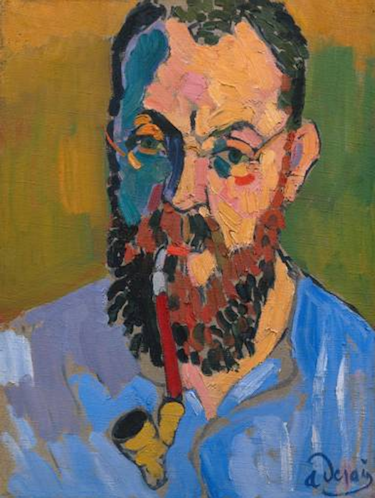
"Henri Matisse" by André Derain, Collioure, 1905
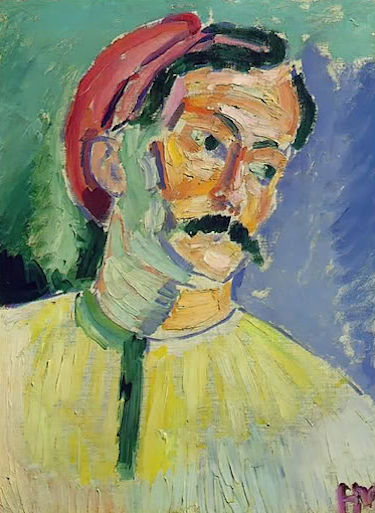
"André Derain" by Henri Matisse, Collioure, 1905
Resources
- The Fauves Web Tour from the National Gallery of Art
- artfactory has a nice overview of Fauvism
- Fauvism - an essay from the Metropolitan Museum of Art
- Paris: The Luminous Years (PBS) is currently available to watch online and includes information about the Fauvists.
Lesson Plans
- Henri Matisse: Color and Light, from the National Gallery of Art (More on the Fauves new approach to color can be found in this article)
- Painting a Fauvist Self-Portrait (.PDF) from Scholastic Art
- Creating a Colorful Landscape (.PDF) from Scholastic Art
Labels: Art
"Les Voiliers" by Henri Matisse, 1906
Poetry for Young People (Excellent series from Sterling Publishing)
- 1564-1616 William Shakespeare by David Scott Kastan
- 1757-1827 William Blake by John Maynard
- 1770-1850 William Wordsworth by Dr. Alan Liu
- 1807-1882 Henry Wadsworth Longfellow by Francis Schoonmaker
- 1809-1892 Alfred, Lord Tennyson by John Maynard
- 1809-1849 Edgar Allan Poe by Brad Bagert
- 1812-1888 Edward Lear by Edward Mendelson
- 1812-1889 Robert Browning by Eileen Gillooly
- 1819-1892 Walt Whitman by Jonathan Levin
- 1830-1886 Emily Dickinson by Francis Schoonmaker Bolin
- 1832-1898 Lewis Carroll by Edward Mendelson
- 1850-1894 Robert Louis Stevenson by Frances Schoonmaker
- 1865-1936 Rudyard Kipling by Eileen Gillooly
- 1865-1939 William Butler Yeats by Jonathan Allison
- 1874-1963 Robert Frost by Gary D. Schmidt
- 1878-1967 Carl Sandburg by Francis Schoonmaker Bolin
- 1879-1955 Wallace Stevens by John N. Serio
- 1883-1963 William Carlos Williams by Christopher MacGowan
- 1892-1950 Edna St. Vincent Millay by Francis Schoonmaker
- 1902-1967 Langston Hughes by David Roessel
- 1928-0000 Maya Angelou by Edwin Graves Wilson, Ph.D.
- Poetry for Young People: The Seasons by John N. Serio
- Poetry for Young People: Animal Poems by John Hollander
- Poetry for Young People: American Poetry by John Hollander
Poetic Form
- A Kick in the Head: An Everyday Guide to Poetic Forms by Paul B. Janeczko, Chris Raschka
- Poetry Matters: Writing a Poem From the Inside Out by Ralph Fletcher
- Pizza, Pigs, and Poetry: How to Write a Poem by Jack Prelutsky
- The Power of Poems: Teaching the Joy of Writing Poetry by Margriet Ruurs
- Poetry Lessons: Everything You Need by Kathy A. Perfect
- Poetry Writing Handbook: Definitions, Examples, Lessons by Greta Lipson and Judy Mitchell
Labels: Language Arts, Poetry
Picture Books for Teaching Figurative Language
0 comments Posted by Kristine at 3/10/2011 10:26:00 AM"La Lecture" by Henri Matisse
- Swamp Angel by Anne Isaacs, Paul Zelinsky
- The Giant of Seville: A "Tall" Tale Based on a True Story by Dan Andreasan
- Doña Flor: A Tall Tale About a Giant Woman with a Great Big Heart by Pat Mora, Raul Colon
- Thunder Rose* by Jerdine Nolen
- Monkey Business* by Wallace Edwards
- The Cat's Pajamas by Wallace Edwards
- There's a Frog in My Throat: 440 Animal Sayings a Little Bird Told Me by Loreen Leedy, Pat Street
- You Are What You Eat: and Other Mealtime Hazards by Serge Bloch
- Saturday and Teacakes* by Lester Laminack, Chris Soentpiet
- Dream: A Tale of Wonder, Wisdom and Wishes by Susan V. Bosak, Leon Dillon
- One Leaf Rides the Wind by Celeste Mannis, Susan Kathleen Hartung
- Wild Child by Lynn Plourde, Greg Couch
- Tar Beach by Faith Ringold
- Prairie Train by Marsha Wilson Chall, John Thompson
- In November by Cynthia Rylant, Jill Kastner
- Owl Moon by Jane Yolen
- White Snow, Bright Snow by Alvin Tresselt, Roger Duvoisin
- Hide and Seek Fog by Alvin Tresselt, Roger Duvoisin
- Elephant Dance: Memories of India* by Theresa Heine, Sheila Moxley
- Chanticleer and the Fox by Geoffrey Chaucer, Barbara Cooney
- Everyone Knows What a Dragon Looks Like by Jay Williams, Mercer Mayer
- The Little Island by Margaret Wise Brown, Leonard Wisegard
- Owl Moon by Jane Yolen
- White Snow, Bright Snow by Alvin Tresselt, Roger Duvoisin
- Hide and Seek Fog by Alvin Tresselt, Roger Duvoisin
- Quick as a Cricket by Audrey Wood, Don Wood
- New York is English, Chattanooga is Creek* by Chris Raschka
- Hello, Harvest Moon by Ralph Fletcher, Kate Kiesler
- The Little House by Virginia Lee Burton
- Gilberto and the Wind by Marie Hall Ets
- Flossie and the Fox by Patricia McKissack, Rachel Isadora
- There is a Flower At the Tip of My Nose Smelling Me by Alice Walker, Stefano Vitale
- Chicka Chicka Boom Boom by Bill Martin Jr., John Archambault, Lois Ehlert
- I Have an Olive Tree by Eve Bunting, Karen Barbour
- The Lotus Seed by Sherry Barbour, Tatsuro Kiuchi
- The Keeping Quilt by Patricia Polacco
- Grandfather's Journey by Allen Say
- Home of the Brave by Allen Say
- The Rag Coat by Lauren A. Mills
Assonance and Consonance
- Animalia by Graeme Base
- Alligators All Around by Maurice Sendak
- Walter Was Worried by Laura Vaccaro Seeger
- A Little Book of Alliterations by Felix Arthur, Jenny Capon
- More here
- Langston's Train Ride* by Robert Burleigh, Leonard Jenkins
- Charlie Parker Played Be Bop by Chris Raschka
- Snow Sounds: An Onomatopoeic Story by David Johnson
- Arctic Lights, Arctic Nights by Debbie S. miller, Jon Van Zyle
Labels: Language Arts
All items are from Home Science Tools except those in light blue which can be found at Carolina Biological Supply.
- Microscope
- Digital Stop Watch
- Slides
- Depression Slides
- Coverslips
- (4) Plastic Cups with Lids (2A, 2B)
- Clover Seeds (2A)
- (4) Graduated Cylinder (2A)
- Sample Tray (2A, 2B)
- Brine Shrimp Eggs (2B)
- Magnifying Glass
- Balance (2B, 8A)
- Safety Goggles (4A)
- Apron (4A)
- (4) 40ml Containers with Screw Caps (4A)
- Bromothymol Blue Solution (4A)
- Beakers (4A, 5B)
- Petri Dishes
- 2-5cm Sprigs of an Aquatic Plant (4A)
- Funnel (4A)
- Brine Shrimp (5B)
- Plastic Droppers
- Iodine Stain (7A)
- Prepared Slide: Human Muscle Tissue (7B)
- Live Ulothrix (7B)
- Methylene Blue Stain (7B)
- (2) 600 ml Beakers (8A)
- 50 ml Beakers (8A)
- Live Euglena, Amoeba, Paramecium Cultures (9A)
- Prepared Slide: Onion Root Tip Slide (10A)
- Prepared Slide: Horse Ascaris Slide (10A)
- PTC Paper (11A)
- Pop Beads and Clear Plastic Connectors (12A, 12B)
- Leaf Cutaway Slide (16A)
- Zebrina Plant (16A) (*Order 3-4 weeks prior to Investigation)
- Forceps (16A)
- Glucose Solution (16A)
- Dissecting Scissors (16B)
- Live Planarians (17A)
- Cow Eye Dissection Kit (17B)
- Sphygmomanometer (18B)
- Stethoscope (18B)
Illustrations by Charles Harper, Giant Golden Book of Biology, 1961
Labels: Science
Part One: Units 1-3
Unit 4: Evolution and Change
Chapter 11: Evolution
- Section 11.1: Evidence for Evolution
- Student Record Sheet: Investigation 13A: Crazy Adaptions
- Skill and Practice Sheet 13.1: Charles Darwin
- Suggested Reading: The Tree of Life: Charles Darwin by Peter Sis, Charles Darwin and the Beagle Adventure by A.J. Wood, On the Origin of Species: The Illustrated Edition by Charles Darwin, David Quammen. (Additional Literature Tie-In: The Evolution of Calpurnia Tate by Jacqueline Kelly)
- An excellent 53-page booklist on Darwin and evolution can be found here. See also: Charlie's Playhouse.
- DVD(s): Creation, Darwin's Dangerous Idea, Darwin's Secret Notebooks
- Section 11.2: How Evolution Works
- Section 11.3: Natural Selection
- Tree of Life Web Project
- Charles Darwin from The Open University: Includes "Devolve Me" activity.
- Section 12.1: Evidence from Rocks
- Student Record Sheet: Investigation 14A: Relative Dating
- Graphic Organizer 14.2: Relative Dating
- Skill and Practice Sheet 14.1: Scientific Notation
- Skill and Practice Sheet 14.1: Nicholas Steno
- Skill and Practice Sheet 14.2: Relative Dating
- Student Record Sheet: Investigation 14B: Interpreting the Fossil Record
- Section 12.2: How Earth Changes
- Section 12.3: Life History
Chapter 13: The Diversity of Life
- Section 13.1: Taxonomy and Systematics
- Student Record Sheet: Investigation 15A: Creature Cladogram
- Creature Cards for Creature Cladogram
- Graphic Organizer 15.1: Taxonomy
- Skill and Practice Sheet 15.1: Carolus Linnaeus
- Skill and Practice Sheet 15.1: Primate Cladogram
- Animal Kingdom Labels (.PDF) for animal classification; from Montessori Materials
- Section 13.2: Algae and Fungi
- Graphic Organizer 15.2: Algae and Fungi
- Student Record Sheet: Investigation 15B: Bread Mold
- Spore Print Lab at Middle School Science
- Yeast Experiments at Home Biology
- Growing Fungi Lab at Home Biology (And for fun, a Glow in the Dark Mushroom Kit)
- Section 14.1: What Are Plants?
- Section 14.2: Roots, Stems, and Leaves
- Student Record Sheet: Investigation 16A: Leaf Structure and Function
- Skill and Practice Sheet 16.2: The Parts of a Plant
- Skill and Practice Sheet 16.2: Root Structure Diagram
- Section 14.3: Reproduction in Flowering Plants
- Student Record Sheet: Investigation 16B: Flower Dissection
- Skill and Practice Sheet 16.3: Flower Parts
- Skill and Practice Sheet 16.3: Plant Reproduction
- Suggested Reading: John Muir: My Life with Nature by Joseph Cornell and John Muir
- Science in a Nutshell Kit: Flowering Plants at Delta Education
- See: Planting Science
Botany Survey Set at Home Science Tools
Chapter 15: Animals
- Section 15.1: What Is an Animal?
- Graphic Organizer 17.1: Animals
- Student Record Sheet: Investigation 17A: Observing Planarians
- Live planarians at Carolina Biological Supply (also here)
- Extra Lab Idea: Stem Cell Research: Plenty of Planarian and Planarian Dissection
- Section 15.2: Invertebrate Structure and Function
- Graphic Organizer 17.2: Invertebrates
- Invertebrate Critter Cards (.PDF): Students will classify invertebrates into 5 of the main groups.
- Section 15.3: Vertebrate Structure and Function
- Science in a Nutshell Kit: Animal Observatory at Delta Education
Unit 6: The Human Body
Chapter 16: Human Body Systems
- Section 16.1: Circulation and Respiration
- Student Record Sheet: Investigation 18A: Who's Got the Beat?
- Student Record Sheet: Investigation 18B: The Pressure's On
- Graphic Organizer 18.1: The Circulatory System
- Graphic Organizer 18.2: The Respiratory System
- Skill and Practice Sheet 18.1: Stopwatch Math
- Skill and Practice Sheet 18.1: Dr. Daniel H. Williams
- Skill and Practice Sheet 18.1: Dr. Charles Drew
- Skill and Practice Sheet 18.1: Helen Taussig
- Skill and Practice Sheet 18.1: The Heart
- Skill and Practice Sheet 18.1: The Human Respiratory System
- Skill and Practice Sheet 18.1: Circulation
- Section 16.2: Human Reproduction
- Section 16.3: Other Organ Systems
- Science in a Nutshell Kit: Body Basics (Digestive, Respiratory and Skeletal Systems) at Delta Education
- Science in a Nutshell Kit: A Peek Inside You at Delta Education
- Section 17.1: Bones and Muscles
- Graphic Organizer 19.1: Structure of Bone
- Skill and Practice Sheet 19.1: Human Skeletal System Diagram
- Skill and Practice Sheet 19.1: Bone Cross-Section
- Skill and Practice Sheet 19.1: Types of Human Body Joints
- Section 17.2: The Human Body as a Machine
- Student Record Sheet: Investigation 19A: Levers
- Student Record Sheet: Investigation 19B: Levers and the Human Body
- Graphic Organizer 19.2: Skeletal/Muscle Partners as Simple Machines
- Skill and Practice Sheet 19.2: Mechanical Advantage
- Skill and Practice Sheet 19.2: Types of Levers
- Skill and Practice Sheet 19.2: Levers in the Human Body
- Science in a Nutshell Kit: The Human Machine at Delta Education
- Section 18.1: The Nervous System
- Graphic Organizer 20.1: Nerve Impulses
- Skill and Practice Sheet 20.1: Brain Diagram
- Neuroscience for Kids [website] and Backyard Brains [website + kit]
- Section 18.2: Vision
- Student Record Sheet: Investigation 20A: Color Vision
- Student Record Sheet: Investigation 20B: The Human Eye
- Graphic Organizer 20.2: How the Eye Works
- Skill and Practice Sheet 20.2: Measuring Angles with a Protractor
- Skill and Practice Sheet 20.2: Reflection
- Skill and Practice Sheet 20.2: Using Ray Diagrams
- Skill and Practice Sheet 20.2: Drawing Ray Diagrams
- Skill and Practice Sheet 20.3: Parts of the Human Eye
- Section 18.3: Optics
- Section 18.4: Hearing
- Science in a Nutshell Kit: Vision and Hearing at Delta Education
- Science in a Nutshell Kit: Smell, Taste, Touch at Delta Education
Labels: Science
Subscribe to:
Posts (Atom)
